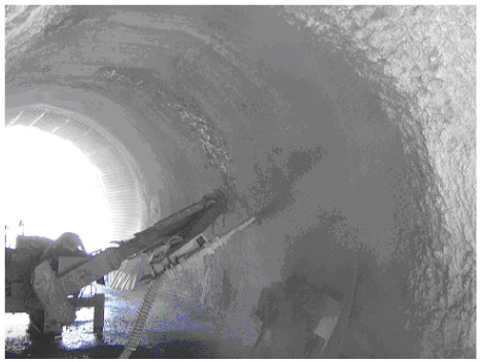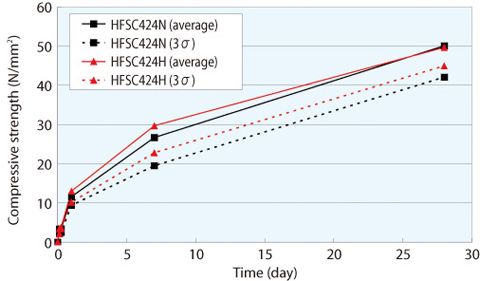Table 2-1 The mix composition of concrete for shotcreting test

Fig.2-6 State of shotcreting in the test tunnel

Fig.2-7 Compressive strength of shotcrete core
To maintain stability of host rock in deep geological tunnel construction, a cement tunnel supporting system is the most promising candidate. Hyper alkaline solution with pH as high as 12.5 is used for hardening ordinary Portland cement (OPC), and may affect nearby rock and bentonite if exposed for a long period, although OPC has been used in actual construction in civil engineering field. Highly flyash containing silicafume cement, HFSC, has been developed by JAEA, and its in-situ applicability tests are planned at the Horonobe underground research laboratory (URL) starting in 2007. In this study, the mix proportion of HFSC in shotcrete was investigated and workability was assessed. Since strength of 36 N/mm2 after 28 days is desired for the supporting system, two promising mix proportions to achieve this strength were proposed (Table 2-1). A 40% water to binder ratio (W/B) was needed in the case where OPC is the base cement of HFSC, and 45% W/B is needed in the case of high early strength Portland cement (HPC) in order to achieve the design strength. The actual scale shotcreting test was carried out with a hardening accelerator admixture (Fig.2-6). The workability of both 40% and 45% W/B was good. Although many pores were observed on the surface, the density uniformity of the inner portions satisfied the design requirement. The mean core strength of both types of shotcreting is more than 48 N/mm2 after 28 days, the required design strength (Fig.2-7). The pH of pore water from HFSC shotcreting was 12.4 after 28 days, since the pozzolanic reaction has progressed sufficiently. The mix proportion will be determined using actual materials in construction at the Horonobe URL, and assessment of long term pH change will be carried out in future work.